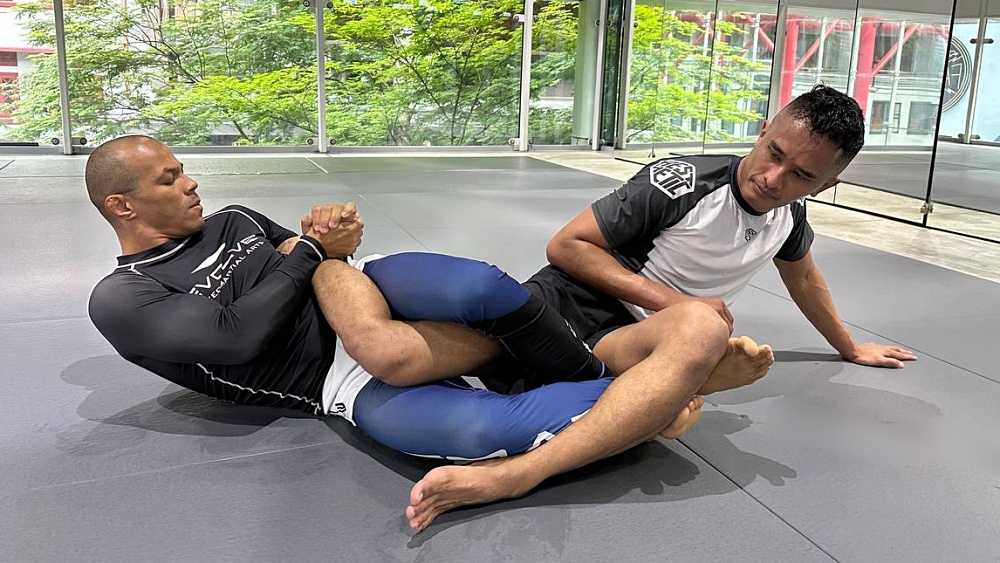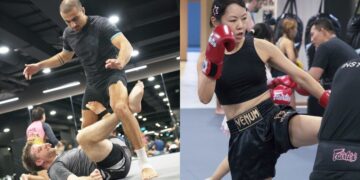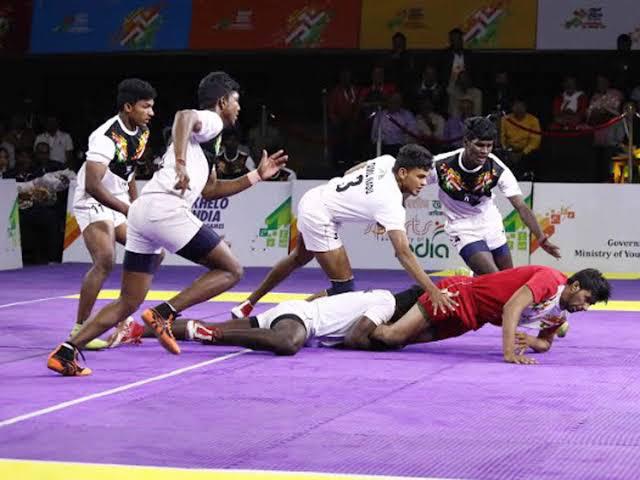
In the ever-evolving world of BJJ, there has been a noticeable shift in how practitioners approach the ground game. Many practitioners now emphasize their leg lock game, which is now considered a must-learn across all levels. What was once a niche area has now become a central pillar of modern grappling.
One of the positions that has recently come into play is the diagonal ashi. This is a highly technical and effective tool in the hands of competent practitioners. Today, we’ll go over the diagonal ashi in Brazilian Jiu-Jitsu.
Modern BJJ And The Rise Of The Leg Lock Game
To understand where diagonal ashi fits in, it helps to look at how the leg lock game has grown over the last decade. Not long ago, leg locks were viewed by many as crude or even unsportsmanlike. The traditional mindset leaned heavily toward positional hierarchy (passing the guard, establishing mount, or getting into back control), then submitting. Attacking the legs was often considered a shortcut or a sign of poor fundamentals.
That view has since changed, thanks to the explosion of No-Gi competitions and submission-only tournaments. Key figures like John Danaher, Gordon Ryan, Craig Jones, and others have shown the effectiveness of attacking the lower body, and with that, the leg lock game has evolved into something incredibly technical and nuanced.
Today’s high-level competitors understand that leg entanglements offer more than just submissions; they are a game as deep as their upper-body counterparts. As the sport has matured, so too have the systems and entries surrounding leg attacks, giving birth to positions like diagonal ashi.
The Ashi Garami And Its Many Variations
Ashi garami, which roughly translates to “leg entanglement” in Japanese, serves as the foundation of most modern leg lock positions. In its most basic form, the ashi garami involves controlling one of your opponent’s legs by threading your legs around it, usually placing one leg across their waist or hip, and the other underneath their thigh or shin.
From there, several variations can be explored, each with its purpose. The traditional straight (irimi) ashi garami is excellent for straight ankle locks. The outside ashi opens up entries to heel hooks when your opponent’s knee is facing outward. The cross-ashi isolates the opponent’s hips and legs. And now the diagonal ashi.
Each variation offers a different angle of control and submission threat. Some are better for sweeping, others are better for breaking mechanics. What makes the diagonal ashi effective is its unique hybrid of both.
What Is The Diagonal Ashi?
The diagonal ashi is a variation where your body is positioned at a 45-degree angle to your opponent’s leg, instead of being square in front of it like the traditional Ashi. Imagine starting in straight ashi garami but shifting your hips diagonally, aiming toward the far side of your opponent’s torso. Your inside leg goes over the opponent’s thigh, while your outside leg threads under and across their shin or calf.
This position allows you to maintain strong rotational control of your opponent’s leg while staying off their direct line of counterattacks. One of the key benefits is that it opens up an extremely tight inside heel hook, thanks to the angle of control and the tension created by the diagonal posture. But more than that, it provides options for transitions, sweeps, and other upper-body entanglements as well.
What makes the diagonal ashi deceptively powerful is its pressure and the off-balancing (Kuzushi) effect it generates. The angle of control makes it difficult for your opponent to turn, slip the knee, or spin out, especially when reinforced with proper grips and wedges. It’s also a less-explored position, meaning many opponents may not immediately recognize the danger or have prepared defenses for it.
Safety Considerations In The Position
As with all leg entanglements, especially those involving heel hooks, safety must always come first. The diagonal ashi creates discomfort on the knee when finishing from inside heel hooks. It’s easy to underestimate how quickly anything can happen from this angle.
Training partners should tap early and often, and instructors should emphasize control over brute force. Clear communication in the gym is essential when training from this position, particularly when heel hooks are involved. Practitioners should also take time to understand the escape routes when caught in this position.
Position Before Submission
One of the most important principles in Brazilian Jiu-Jitsu is “position before submission,” and it applies heavily to diagonal ashi. While it may be tempting to dive for a heel hook as soon as the entanglement is established, rushing can cause you to lose the angle or give your opponent space to escape.
Good diagonal ashi control starts with tight leg positioning, an understanding of how to anchor your weight, and precise hand placement. Control the knee line first. Keep the opponent’s hip immobilized. Only once the structure is in place should you begin to apply the other mechanics.
Another key point to note is that your transition from diagonal ashi into other leg entanglements depends on how your opponent reacts. This makes it an excellent position not just for finishing, but for flowing through a broader leg lock system.
Conclusion
The diagonal ashi may not be as famous as some of the more established leg lock positions, but it’s quickly gaining recognition for its utility in high-level grappling. Like all positions in Jiu-jitsu, mastery comes with time, reps, and a deep understanding of the mechanics involved. The diagonal ashi can become a highly effective tool for offense and transition when trained responsibly and thoughtfully into your overall game.
In today’s modern BJJ landscape, the athletes who excel are those who combine creativity with excellent fundamentals. We encourage you to try the diagonal ashi and see how it boosts your overall game.
You may also like:
The 10 Must-Watch Athletes At IBJJF Worlds 2025
5 Reasons Why The Arm Crush Is A Must-Learn Move In BJJ
Fear is a natural part of competition, especially in combat sports like Brazilian Jiu-Jitsu (BJJ), Muay Thai, boxing, and mixed martial arts (MMA). Whether you’re a first-time white belt entering your local tournament or a…
Brazilian Jiu-Jitsu is a martial art that offers many ways to finish a match. A common yet practical way to do this is to attack the opponent’s arm with a variety of arm locks. In…
Every year, athletes embark on their Brazilian Jiu-Jitsu journey filled with hope to make their dreams come true and make history. With a month coming before the World IBJJF Jiu-Jitsu Championship 2025, grappling fans can’t…
The back mount is the most dominant position in BJJ. It allows you to set up your attacks without your opponent peripherally seeing how you set them up. Because of this, opponents will rely on…
If you’ve ever watched a fight and thought, “Wow, this guy never backs off?” You’ve witnessed pressure fighting in action. Pressure fighting in martial arts is the art of making your opponent miserable with constant…
The countless chokes you learn in Brazilian Jiu-Jitsu are a massive part of what makes it such a fun martial art. While most BJJ techniques were developed to be performed on opponents wearing Gis, many…
Mixed martial arts (MMA) is one of the fastest-growing sports today. MMA attracts a wide spectrum of athletes and viewers from all walks of life. From the likes of Mark Zuckerberg to your regular weekend…
Your isometric strength plays a role in martial arts like Brazilian Jiu-Jitsu, Wrestling, Boxing, and Muay Thai, whether you realize this or not. Anything that requires holding a position while fighting against tension and other…
Getting older doesn’t mean you have to hang up your gloves or retire your Gi in martial arts. While aging is inevitable, there are ways to keep dominating the mat, ring, and cage as your…
As children grow, developing life skills like emotional resilience is essential to help them navigate life’s challenges. While these skills can be learned through experience and guidance, activities like martial arts offer a powerful and…
The focus, strategy, and grit you learn while training martial arts like Muay Thai, Brazilian Jiu-Jitsu (BJJ), and Boxing carry over into your professional life when deadlines are looming, co-workers call in sick, and your…
You’ve tried every diet there is out there: keto to force your body to use fat as its primary source of energy, intermittent fasting to improve testosterone production, even that questionable “caveman” phase where you…





![[WATCH] IND vs SA 2025: Umpire Rohan Pandit down in pain as Sanju Samson drive hits knee](https://babu88sports.com/wp-content/uploads/2025/12/watch-ind-vs-sa-2025-umpire-rohan-pandit-down-in-pain-as-sanju-samson-drive-hits-knee-360x180.jpg)




























